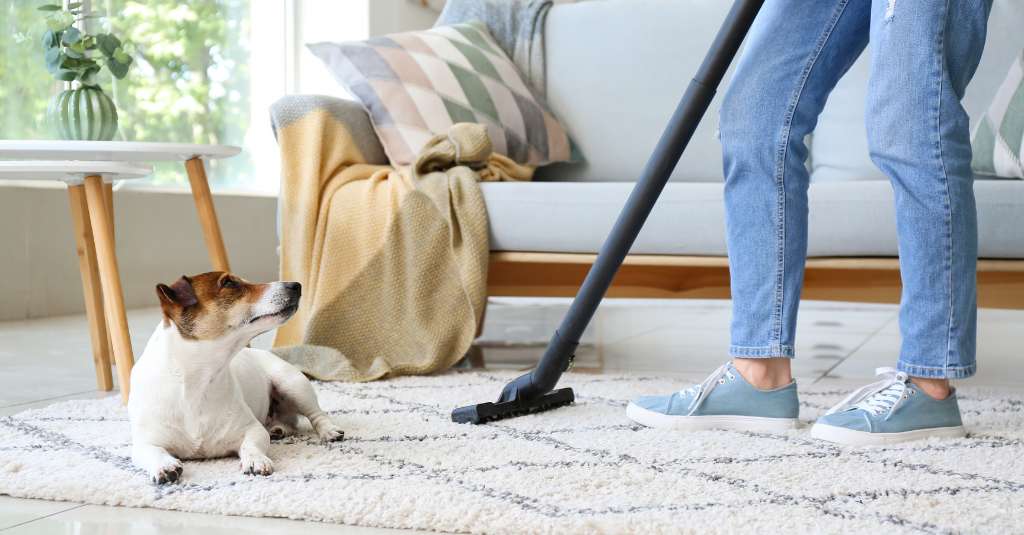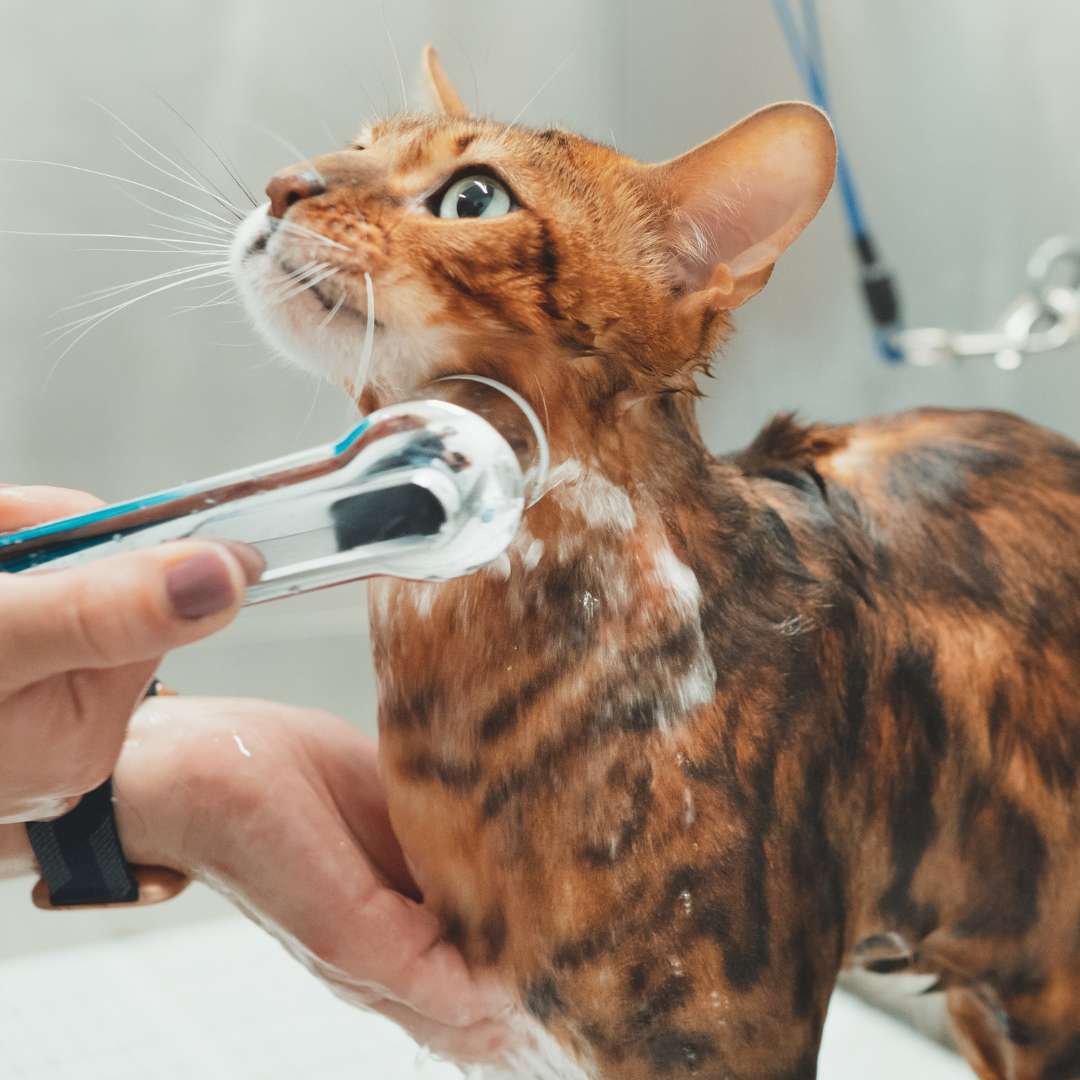
Looking to have a pet-safe spring cleaning? You’re in the right place!
It’s March; it’s time to fling those windows open, sweep the winter dust bunnies away and wipe the surfaces clean. But before you roll up your sleeves, knowing pet-safe cleaning practices like which cleaner is safe for your little bean is key.
Let’s dive into five simple tips to keep your pet safe while doing your seasonal sweep!
Picking A Pet Safe Cleaner
Choosing pet-friendly cleaning products is the first step in maintaining a safe environment.
Traditional cleaning products, while effective, can be toxic and even fatal to our furriends. In order to pick a pet safe cleaner, it’s best to recognize and stay far, far away from the unsafe ones. To do that, we need to be well-versed with the poisonous ingredients.
If your pet is suffering from toxic poisoning, contact the Pet Poison Helpline at (888) 426-4435 right away.
If your pet is suffering from toxic poisoning, contact the Pet Poison Helpline at (888) 426-4435 right away.
To prevent this, it is important to know the common harmful ingredients in commercial cleaners!
Avoid these Ingredients…
- Gases: Ammonia, Chlorine, Formaldehyde
- Liquids: Bleach, Isopropyl alcohol
- Corrosive chemicals: Phenols
- Fragrance additives: Phthalates
- Insect repellants and pesticides: Pyrethrins
If you spot any of these terms on the label/ingredient list, steer clear of them. And that leads us to an important point…
Read the label!
Make it a habit to read the product label before purchasing anything your pet may get their paws on. Besides the ingredients, scan for red-flag words like ‘corrosive,’. Conversely, if you see phrases like “Green Seal” and ‘pet-friendly,’ you are likely on the right track!
DIY Pet-Safe Spring Cleaning Solutions
Keep in mind that even non-chemical ingredients can be toxic to pets. For example, essential oils like citrus, sweet birch, Ylang-ylang, and Wintergreen are NOT pet-friendly. That’s why you should always do your research before home-making your cleaning blends.
Essential oils like citrus, sweet birch, Ylang-ylang, and Wintergreen are NOT pet-friendly.
Instead of using essential oils, you can try mixing white vinegar and water for an all-natural homemade cleaning solution. Mix equal parts vinegar and water in a spray bottle, apply to the surface, and wipe with a clean microfiber cloth or sponge. For tougher stains or odors, you can add a small amount of baking soda to the mix. This solution is non-toxic and absolutely pet-safe!
Safe Storage Practices
Cleaning products, when not stored properly, can be a serious hazard for your little one. By safely storing them, we can significantly reduce the risk of accidents and poisoning.
Install childproof locks on all cabinets containing cleaning supplies and consider storing cleaning products in high cabinets or locked pantries inaccessible to pets. We also suggest using organizers and shelf liners to prevent bottles and containers from tipping over.
Vigilant Observation Throughout Pet-Safe Spring Cleaning
Throughout your pet-safe spring cleaning routine, keep a close eye on your furkid. If the poisonous substance got onto their coat, wash it off with lukewarm water and a mild dish soap. In some cases, clipping contaminated fur might be necessary.

However, the toxin may still be present and can be absorbed by your pet’s skin. Therefore, we still recommend keeping them under close observation for any signs of poisoning, including vomiting, diarrhea, lethargy, seizures, or difficulty breathing.
Even if your little one seems fine, still seek veterinary help! The same goes for accidental ingestion of toxin. Contact your vet or Pet Poison Helpline as soon as possible for treatment. It is helpful to have information ready before your call, like the type of toxin, amount ingested (if applicable), and any symptoms observed.
Managing Toxin Build-Up with NHV Supplements
Herbal supplements like NHV Milk Thistle and NHV BK-Detox can help protect their liver and kidneys and detox their system. Studies indicate Milk Thistle can decrease or even reverse liver damage caused by toxic agents. BK-Detox, on the other hand, not only supports the immune system but also facilitates detoxification of vital organs and blood.
Extra Tip
Given that our furry friends are almost always bare-pawed, be mindful of EVERYTHING they may come in contact with. Alongside using a pet safe cleaner for the floor, windows, and door, consider alternative cleaning methods (whenever possible)!
For washable linens and bedding, throw them into the washing machine with a pet-friendly detergent. Opt for the hottest cycle recommended for the fabric to kill bacteria and dust mites. When the weather allows, skip the dryer and let the sun’s natural UV rays disinfect and freshen bedding! As for your pet’s bowls, wash them daily with warm, soapy water and rinse thoroughly.
While there may be risks in cleaning, don’t be discouraged from it! Regular house cleaning is vital to you and your furmily’s well-being. Comment below if you know other pet-safe cleaning methods! If you have any questions about pet-safe cleaners or anything else, please don’t hesitate to ask our pet experts! Just click the button below.
Published: March 12, 2024

 USD
USD
 Canadian Dollars
Canadian Dollars




